Chris & Allyson vs. Europe (2017)
Budapest Day Four: City Park. Terror Museum. Dohany Street Synagogue. Great Market Hall.
Vacation is like most things: practice and you get really good at it. We allowed ourselves four days to see Budapest, but we checked off all the "must see" items in three. If we were NBA players, we would have sat out the fourth quarter. But there's no garbage time on a vacation with Chris White. After packing our bags and stowing them at the hotel, we were back on the mean streets. The skies were ominous, so we went for the outdoor fun first.
It has been noted that Hungarians had a blowout to celebrate their 1,000th birthday. City Park was a big part of the 1896 millennial celebration; the city installed a triumphal plaza and a pavilion with a few museums. On paper, it seemed like something worth checking out.
We took the Metro to get there. Budapest has a modern subway system, but the line running to City Park must be the oldest. The platforms are tiny and decorated with wood paneling and tile. The trains are tiny. My tiny wife appreciated this and took great pleasure in the ride.
The destination, not so much. Our first stop was the Széchenyi bath. Many people describe it as the finest Budapest spa, and we saw pictures that made the building look beautiful. In person, it seemed very beat up. We walked around the outside and poked our nose in the lobby before moving on.

The interior dome of the Széchenyi bath.
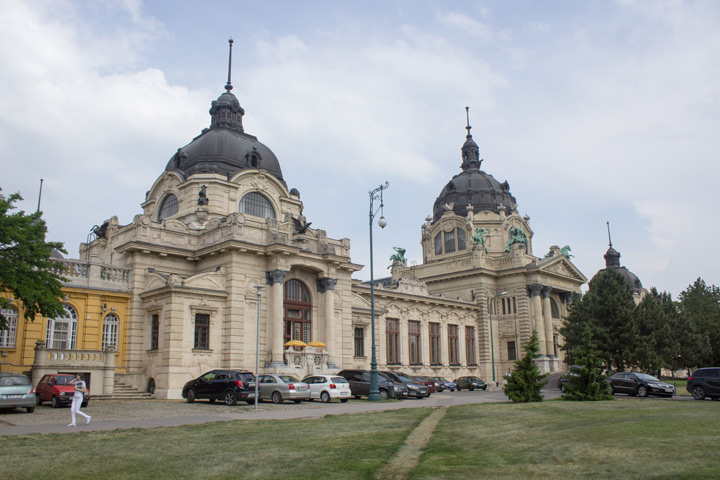
Maybe Budapest's most famous bath, the Széchenyi.
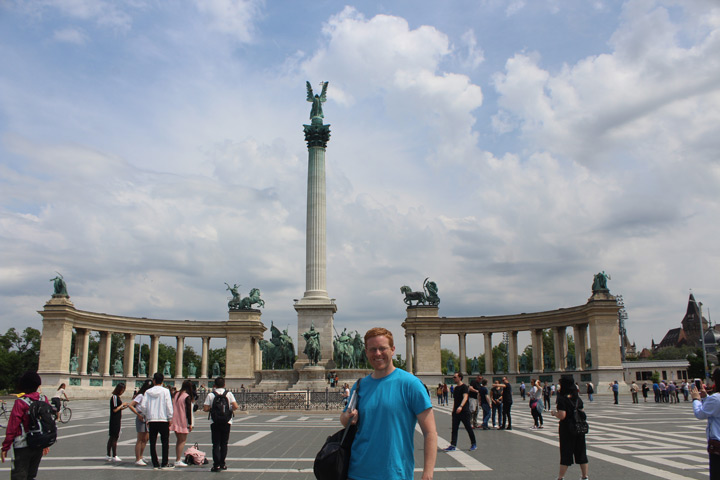
Heroes Square, an enormous public plaza near City Park.

The outside of the Terror Museum -- in the old HQ of the secret police.
City Park was also beat up. It's not a beautifully landscaped green space. Most of it is grass with some ragged paths. We strolled over to the museum pavilion, on a tiny island in a tiny lake. That, at least, was intriguing. The buildings were constructed to honor various styles from Hungarian history, so there's a fairy-tale mishmash quality to the complex. On the outside, it's striking. Unfortunately, they aren't museums you'd want to visit. The biggest is the museum of Hungarian agriculture. And while we liked Hungarian tomatoes, we didn't need the history of Hungarian tomatoes.
The excursion was redeemed by Heroes Square, the traditional entrance to City Park. A giant triumphal pillar in the middle of a plaza is flanked by two colonnades, each decorated with statues of great Hungarians. They went to this well a lot for the millennial celebration, but it works. You can never get enough Arpad. When they were installing this monument in the 19th century, the craftsmen of the day surely thought: This will one day be a great place for selfies.
We walked back toward central Budapest, over top of the Metro line. The destination was the Terror Museum, a quaint spot in the former headquarters of the Communist secret police.
As Americans, we take a lot for granted: Economic freedom, plenteous options in supermarkets, and not being turned against friends and loved ones by a police state. Hungarians experienced a lot of terror, so it's an information-packed museum. There were handouts for each room, printed in English; they detailed the many ways that both the Nazis and the Soviets destroyed Hungarian society for fun. The museum didn't flinch from identifying Hungarian collaborators, with several rooms dedicated to the "Arrow Cross" militia that assisted Hitler and the informants that aided the Soviets.
If you're going to devote your afternoon to terror, you might as well visit something Jewish, right? Our last major destination was the Dohany Street Synagogue. It is the largest in Europe. (Whether by size or capacity, I can't recall.) This is astonishing, because the Jews did not do so well in Hungary in the 20th century.
The building itself is fascinating. It was started in the late 19th century, around the time of St. Istvan's; however, thanks to new-fangled iron construction, it was completed much faster. The Jewish leaders of the era made a conscious decision to incorporate designs and aesthetics from other faiths, reflecting the multi-cultural nature of Budapest. There are bold geometric patterns and towers reminiscent of a mosque. There are many features reminiscent of a Christian cathedral. (The primary architects were Christian.) There's more interior gilding than in the entire Hungarian Parliament.
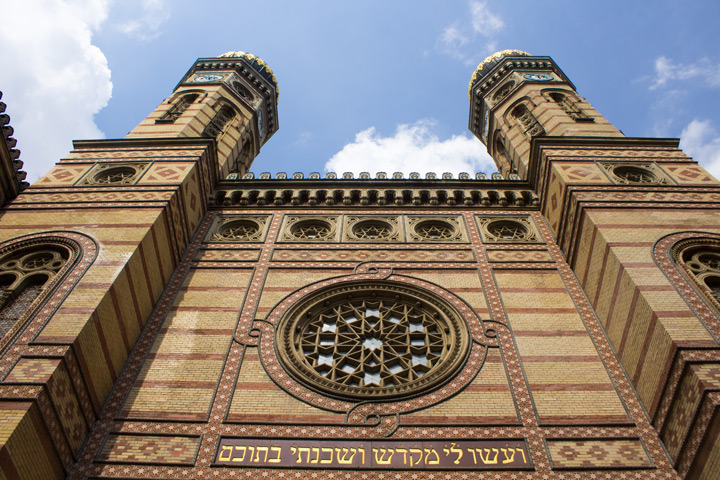
A very impressive entrance, at Dohany Street Synagogue.
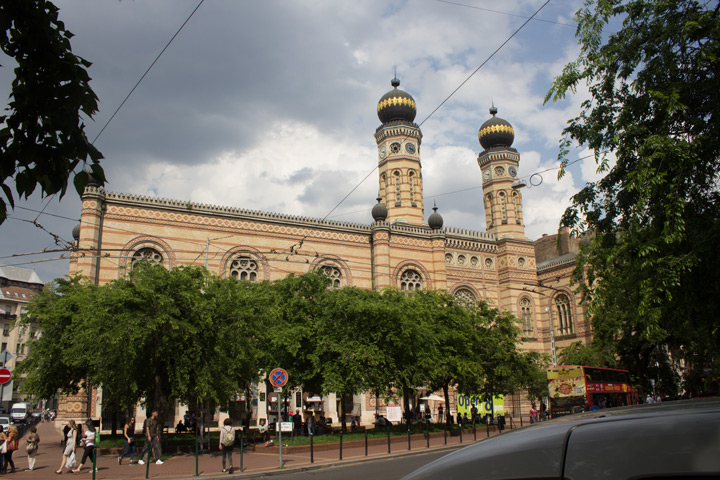
The wider view of the Dohany Street Synagogue, one of the biggest in Europe.
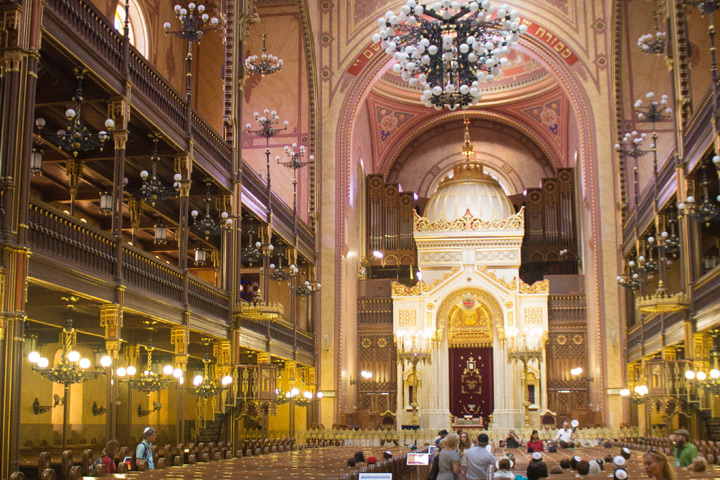
Thanks to some Christian designers, the Dohany Street Synagogue has some churchy features.
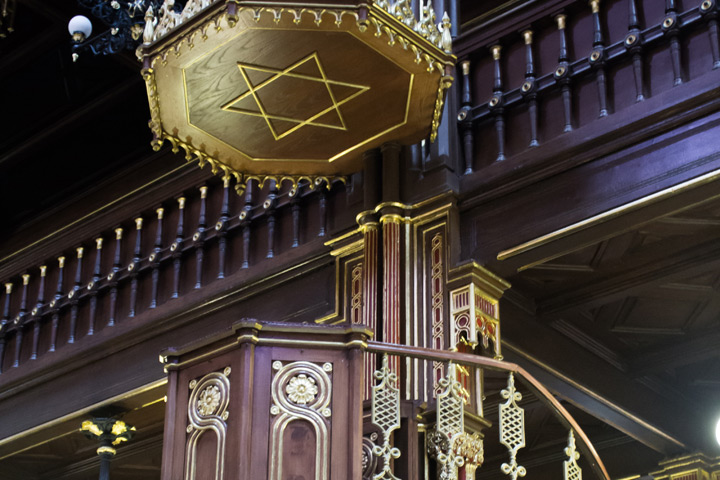
Another church-looking feature with a Jewish twist.
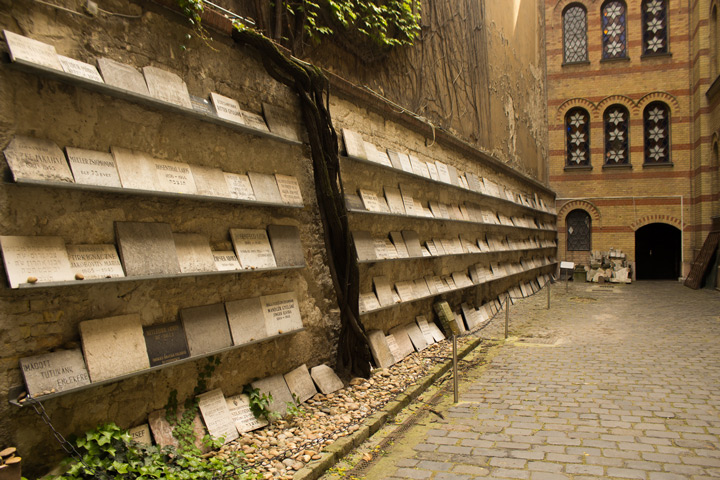
Along a courtyard wall, old tombstones and grave markers.
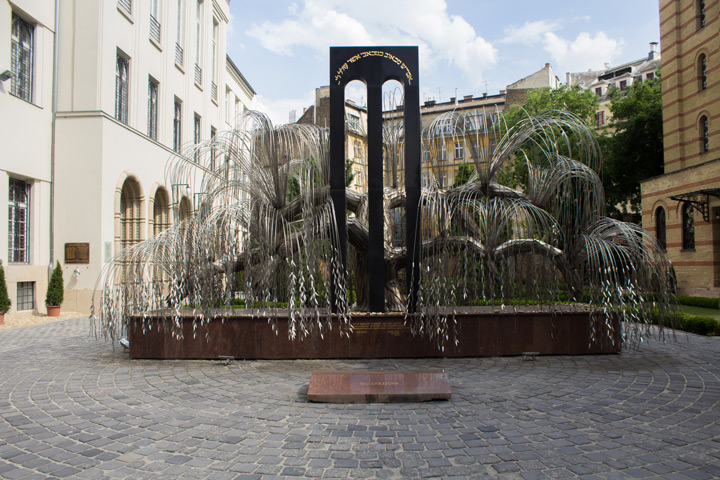
The stunning monument to Holocaust victims at Dohany Street Synagogue.
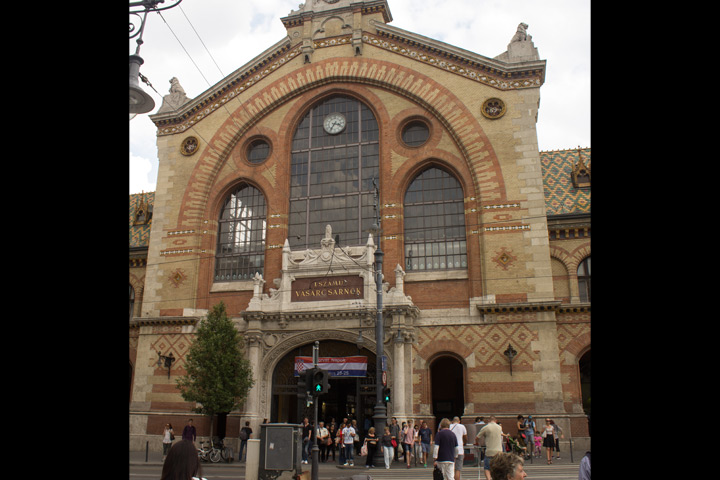
Great Market Hall, our last stop before heading to the airport.
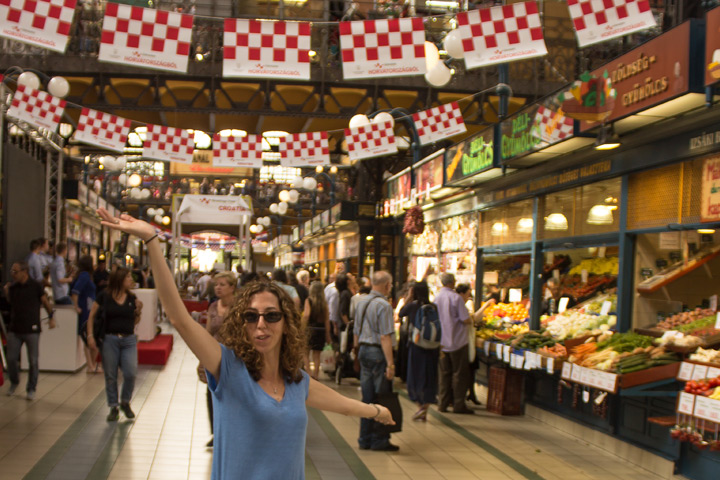
Browsing the stalls at Great Market Hall.
When the city was ruined in World War II, the synagogue was largely untouched -- in part because it was located in a poor segment of the city where there were fewer targets worth bombing. Even as the Jewish population was devastated, the building survived. A sickening reminder of this is the on-site cemetery. It's taboo to have burials so close to a synagogue, but the Jews of the 1940s didn't have an option. They kept burying people in a courtyard nearby.
All this was shared with us by a fine guide, who then showed us to the memorial park on the synagogue grounds. It is anchored by a monument to Holocaust victims: An inverted menorah, in the guise of a weeping willow. The leaves are inscribed with the names of victims, and a nearby monolith serves as a "photo negative" of the Stone Tablets. It was a somber last stop for Budapest, but a moving one.
All that remained was the small matter of escaping Budapest, which was not as easy as we hoped. The clouds overhead delivered a parting gift as we were riding in a taxi to the airport: enormous amounts of hail. So much hail that traffic slowed to a crawl. So much hail that all flights were forbidden from landing in Budapest for an hour. So much hail that we got mildly soaked walking 20 feet from the cab to the terminal. So much hail that parts of the concourse ceiling were leaking in a way that you do not expect from ... well, modern airports.
And then there was the waiting. We were headed to Lisbon, with a connecting flight in Frankfurt. Our flight out of Budapest was pushed back, and there seemed to be no way that we would make our connection. Lufthansa confirmed this while we were in the air -- they took the liberty of rebooking us to a morning flight, and instructed us to find a service rep to get our hotel voucher and so forth. We were upset, but resolved. You can't control these things.
But apparently, neither can Lufthansa. As we stepped off the plane in Frankfurt, a nearby screen said that our original flight to Lisbon was ... boarding. It had also been delayed. We were at gate 41, and the connection was at something like gate 29. We had discussed the possibility of a tight connection, and the emergency plan was put into effect: Chris carries everything, and we run. More accurately, Allyson runs, while Chris keeps pace by walking briskly.
When we made that plan, we knew very little about the Frankfurt airport. It is unbelievably huge, and gate 29 is not near gate 41. You round a corner and get to a hallway where the gate numbering starts back at 1. They designed it with the clear purpose of mocking you. Helpful screens said it was a 17 minute walk.
But there is no garbage time! With the help of people movers, we made it to the Lisbon gate while the last passengers were boarding. We explained to a flummoxed gate agent that we HAD tickets to Lisbon, and therefore there SHOULD still be seats available for us. This was soon confirmed, although there was no way our luggage would be traveling with us. We swallowed hard, hopped on the plane and jetted to Lisbon. After filing a lost luggage report at 12:15 a.m. -- always a positive experience -- we took a cab to our hotel. We had no clean clothes, and we were very tired. But we had each other, and credit cards. That's enough to give anyone hope.
